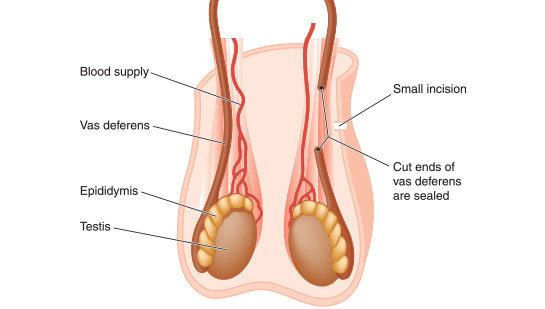The combination may seem odd, but vasectomies have become so common during the NCAA tournament that the trend is referred to by some as “Vas Madness.” A 2017 study conducted by Athena Health found that urologists across the network performed 30 percent more vasectomies during the first round of the 2016 NCAA tournament than they did during an average week—with over 41 percent more vasectomies on the first Friday of the tournament than are usually done on Fridays of any other week. For men with such scheduling finesse, it seems to be a perfect way to recover “according to doctor’s orders” while watching their favorites teams.
What is a vasectomy?
A vasectomy is a surgery that a man may choose if he no longer wants the ability to father children. It’s the safest, most effective, permanent male birth control option. According to the American Urological Association, this procedure is the most common non-diagnostic operation performed by urologists in the U.S.
Although vasectomy is considered a permanent option for male birth control, it can also be reversed through a separate procedure, if needed.
What happens during the procedure?
A consultation visit is scheduled initially, to review the patient’s medical history and conduct a physical examination.
The vasectomy procedure itself is very straightforward and relatively painless. It is performed in the office on an outpatient basis and generally takes about 30 minutes. The patient is awake during the procedure and a local anesthetic is used to numb the area. During the procedure, the doctor makes small incisions to access the two vas deferens tubes, and then cuts and seals them so that sperm can no longer get into the semen.
Although sperm above this area will no longer be able to get into the semen, sperm below the area remains active until used. For this reason, patients must continue other birth control methods for about three months following a vasectomy, or until there is no evidence of existing sperm beyond the blocked tube. A simple analysis indicates when semen no longer contains sperm.
What happens after the procedure?
After the procedure, there may be temporary mild discomfort, swelling, and bruising—which can be managed with rest, using ice packs according to instructions, and taking anti-inflammatory medications.
Most men do not require time off work, and only a day or two of rest, depending upon general health and lifestyle. Strenuous work or exercise must be avoided for about a week, and most men can resume sexual activity after this time, as well.
In the video below, Dr. John Ludlow provides a brief overview of what’s involved in the consultation, the vasectomy procedure, and the recovery that follows.
If you are interested in exploring vasectomy, our team is here to help you every step of the way. You can call us at (616) 392-1816 to request an appointment with one of our doctors.



